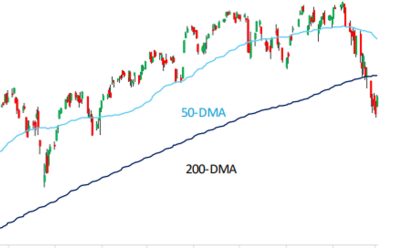Invest like an Olympian
Invest like an Olympian

Becoming an Olympic-level athlete requires planning, discipline, and a variety of training methods and strategies. Becoming an Olympic-level investor requires much the same.
Like so many others during July and August, my family was cheering on Team USA while watching replays of the 2024 Paris Olympics. During these daily viewings, I couldn’t help but marvel at the strength, skill, agility, and determination of all of the athletes.
I recently read the book “Endure: Mind, Body, and the Curiously Elastic Limits of Human Performance” by Alex Hutchinson, which deepened my appreciation for the science and psychology of endurance and what factors impact human performance.
Becoming an Olympic-level athlete requires planning, discipline, and a variety of training methods and strategies. Becoming an Olympic-level investor requires the same.
Training for all seasons
How can we “train” our clients’ portfolios for the best chance for long-term success? What investment approach, method, or strategy should we use?
I’m sure you’ve all heard arguments for active versus passive strategies, or the pros and cons for specific investment methodologies. If we’re thinking about long-term success, we should consider diversifying among many different investment approaches and methodologies so we can capitalize on the strengths of each.
But which investment approaches and methodologies are available, and which should we use? The choices go far beyond what we can cover here.
Given current events, I thought it might be fun to talk about a few popular, but very different investment styles—passive investing, mean reversion, and trend following—as if they were Olympic sports. The analogies are simple (the results of my limited knowledge of each sport and a conversation with my favorite AI tool), but I think they do a good job of revealing their distinct characteristics.
Aim steady: Passive investing
The typical passive portfolio is akin to archery. Archery requires steadiness, patience, a focus on big-picture fundamentals, and a goal in the distance—like a target.
To be a good archer, you need to focus on maintaining the same good stance and aim each time you shoot. However, once you let your arrow fly, you are committed to your course. You cannot correct for changing conditions, such as a sudden breeze or something more catastrophic.
Archers set up their shots based on the environment as they see it right now and hope nothing disturbs the arrow as it progresses toward the target. Passive investing is just like this. Investors make a portfolio allocation decision today, aiming for a long-term future goal, and hope that their strategy keeps them on track. While they may make minimal adjustments to keep the overall “strategic asset allocation” in check, they typically do not adjust their investments to market conditions that could blow them off course from their target.
Grappling with the market: Mean reversion
The mean-reversion approach to investing is like wrestling. It involves a series of rapid, forceful moves designed to counteract randomness from an opponent.
Once the match begins, everything a wrestler does is focused on the short term. It’s about quick moves, closely monitoring the opponent, and adapting to the immediate demands of the match.
Successful wrestlers are disciplined and trained to use precise techniques to counter their opponents. They must also be strong and able to adapt, taking intense and short bursts of energy to counter and overwhelm an opponent.
Mean reversion is similar. Typical mean-reversion strategies aim to capitalize on price deviations by betting that prices will return to their historical averages. This requires taking positions against prevailing trends, much like wrestlers who anticipate and counter their opponents’ moves. Mean-reversion traders need to be agile like wrestlers, making quick and decisive moves to exploit short-term market inefficiencies.
Not a sprint: Trend following
The trend-following approach is the marathon runner of the investor world.
Successful marathon runners require endurance to go the distance, consistency during training to build stamina, patience to plan, time to prepare and execute, and the mental fortitude to push themselves hard enough to minimize their time while leaving enough in the tank to finish the race.
Trend following is similar in many ways. Trend-following strategies involve identifying and investing in market trends, with the expectation that these trends will continue over time. Investors may hold positions for an extended period, riding the wave of a trend to maximize returns.
Trend followers require consistency. They must apply the same strategy without deviation to experience the benefits. Patience is also a virtue because trends may not develop as quickly as hoped or may take unexpected turns.
It’s critical not to jump in before a clear signal indicates a trend, and sometimes it’s challenging to wait for this signal.
That’s where mental fortitude comes in. Like running a marathon, trend following requires pacing yourself so you can complete the race. There will be periods of drawdown and underperformance relative to a benchmark, but the important thing is to focus on the long term and trust the process.
Building a gold-medal portfolio
Every sport has areas that require specific skills and training to excel. Most runners have not developed the skills needed to be a good wrestler or a good archer, the same way many wrestlers would not do well against Olympic runners.
We don’t know the future, so it’s hard to know how to train to prepare for it. Should we be archers or runners? In investing, we don’t need to pick one skill to be good at; we can diversify and use all types of skills and perspectives to have the best opportunity for success, regardless of what the future actually brings. The hard thing about doing that is it goes against conventional wisdom.
That’s where a sophisticated and multi-faceted third-party investment manager with capabilities across both strategic and tactical investment disciplines can help.
They understand that no single strategy or approach fits all market conditions. Ideally, their approach will involve building investment portfolios composed of multiple dynamically risk-managed strategies. These strategies—which make use of various asset classes, time lines, and investment methodologies—are designed to adapt to changing market conditions, helping investors manage risk and capitalize on opportunities.
Just like athletes train for different events, a skilled investment manager equips portfolios with a range of strategies to enhance resilience and performance. Whether it’s navigating market fluctuations or seizing growth prospects, these custom, actively managed strategies aim to support a client’s financial goals while managing risk.
The final chapter of “Endure” talks about the main driver of our ability to push our physical limits, which the author says is mindset. This is the common thread between Olympic marathon runners, archers, and wrestlers: that “I can do it” mindset and the mental toughness to push through discomfort to achieve their goals.
The best investors will be those with diversified portfolios and the mindset and mental fortitude to stay the course even when the going gets tough. Pushing through the hard times and being consistent with a plan is what leads to breakthroughs and success.
The opinions expressed in this article are those of the author and the sources cited and do not necessarily represent the views of Proactive Advisor Magazine. This material is presented for educational purposes only.
 William Hubbard, CFA, is a quantitative money-management analyst. He has spent his career focusing on how active management can generate results regardless of market direction. He earned his bachelor’s degree in electrical engineering, with a minor in economics, from Oakland University.
William Hubbard, CFA, is a quantitative money-management analyst. He has spent his career focusing on how active management can generate results regardless of market direction. He earned his bachelor’s degree in electrical engineering, with a minor in economics, from Oakland University.
RECENT POSTS








